I bought this little plant in 2019 at the CSSA (Cactus and Succulent Society of America) convention held in San Luis Obispo, California, that year. At one point I thought I was going to lose it, but it hung on and finally grew a little. Yesterday I walked into the greenhouse to discover a bud that I must have overlooked had bloomed this special flower. What a neat surprise!
I like that the tips of the stems on this variety carry out the same maroon color found in the flower.
This little huernia is native to South Africa, is closely related to the genus Stapelia, and even has a hint of the carrion smell typical of Stapelia flowers. The odor attracts flies and other insects who then land on the flower and pollinate it.
Stapeliads and huernias are known for having fine hairs on their flowers; the larger the plant and its flower, the more visible and thick the hairs are. If you look really closely at this image, you can make out a few hairs in the center of the flower. I’m not sure what purpose they play on these blooms, but all stapeliads and huernias do seem to have them, so I will just chalk it up to one more characteristic of the plants and save the topic of hair for another day.
If you look to the left of the flower in the picture above and below, you will see another bud forming, so I have another flower to look forward to!
How cool is that?
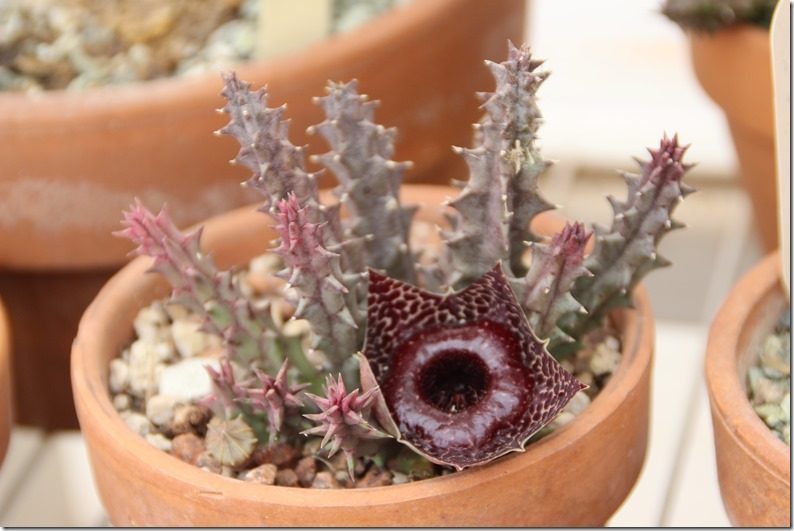
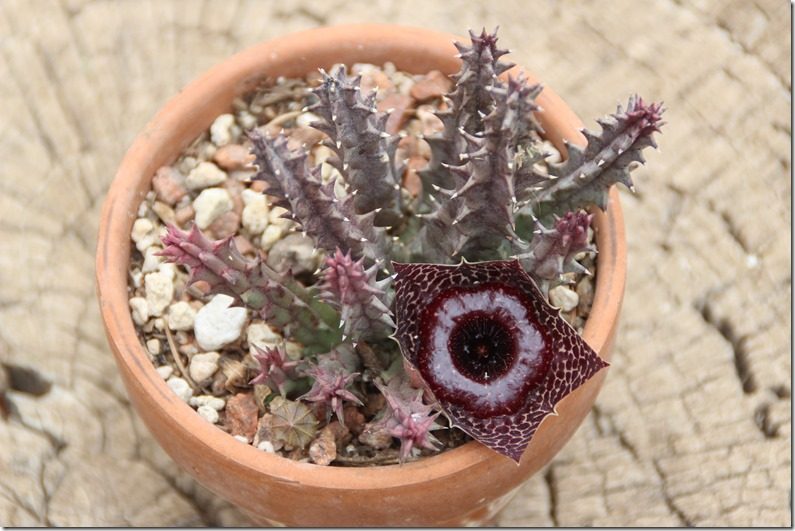
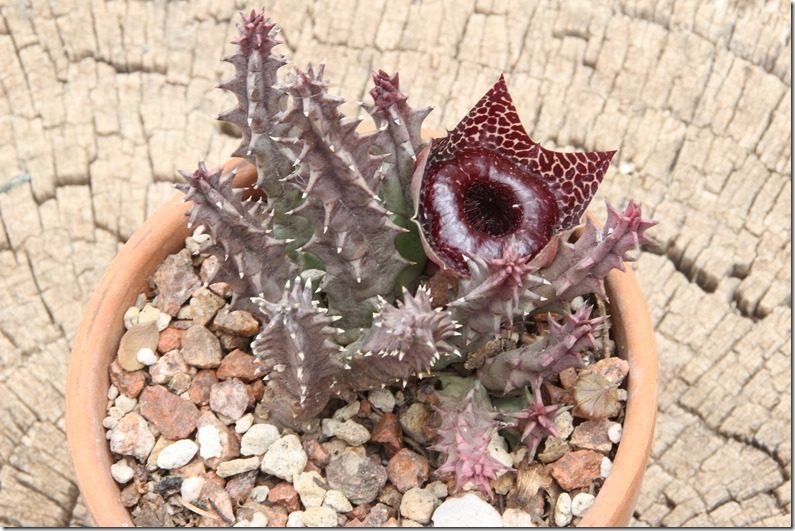
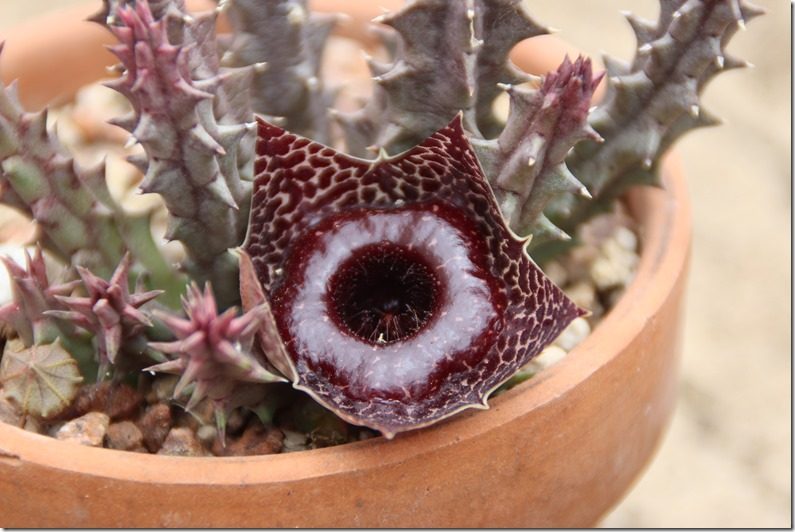
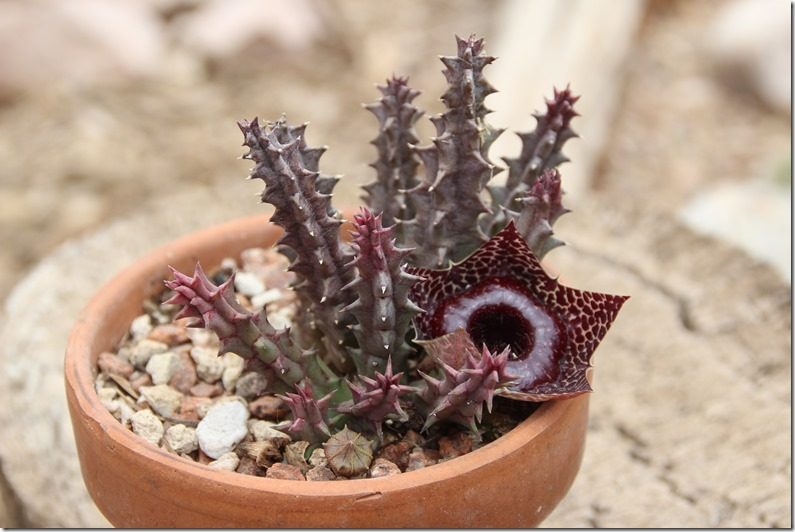
What a neat little flower!
It really is! I was so pleased it bloomed. I am getting quite a collection of huernias and stapeliads. Thanks for reading, Carly.
Do you sell this plant?
No, sadly, I do not! But thanks for reading and asking. You probably will need to go to a cactus specialty nursery to find it. It’s not one you will see at the big box stores. If you decide to order online, please be careful to choose a reputable dealer.